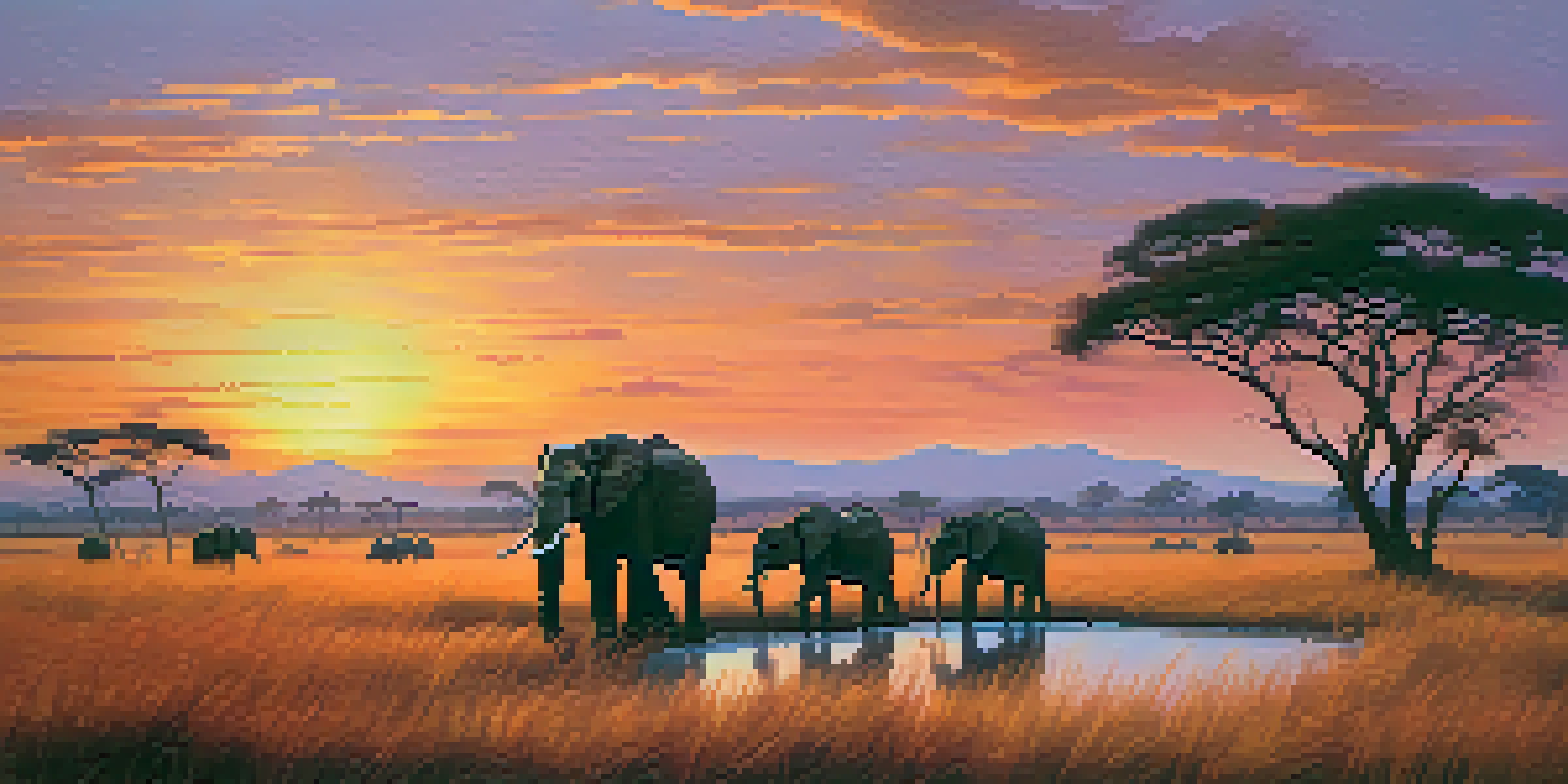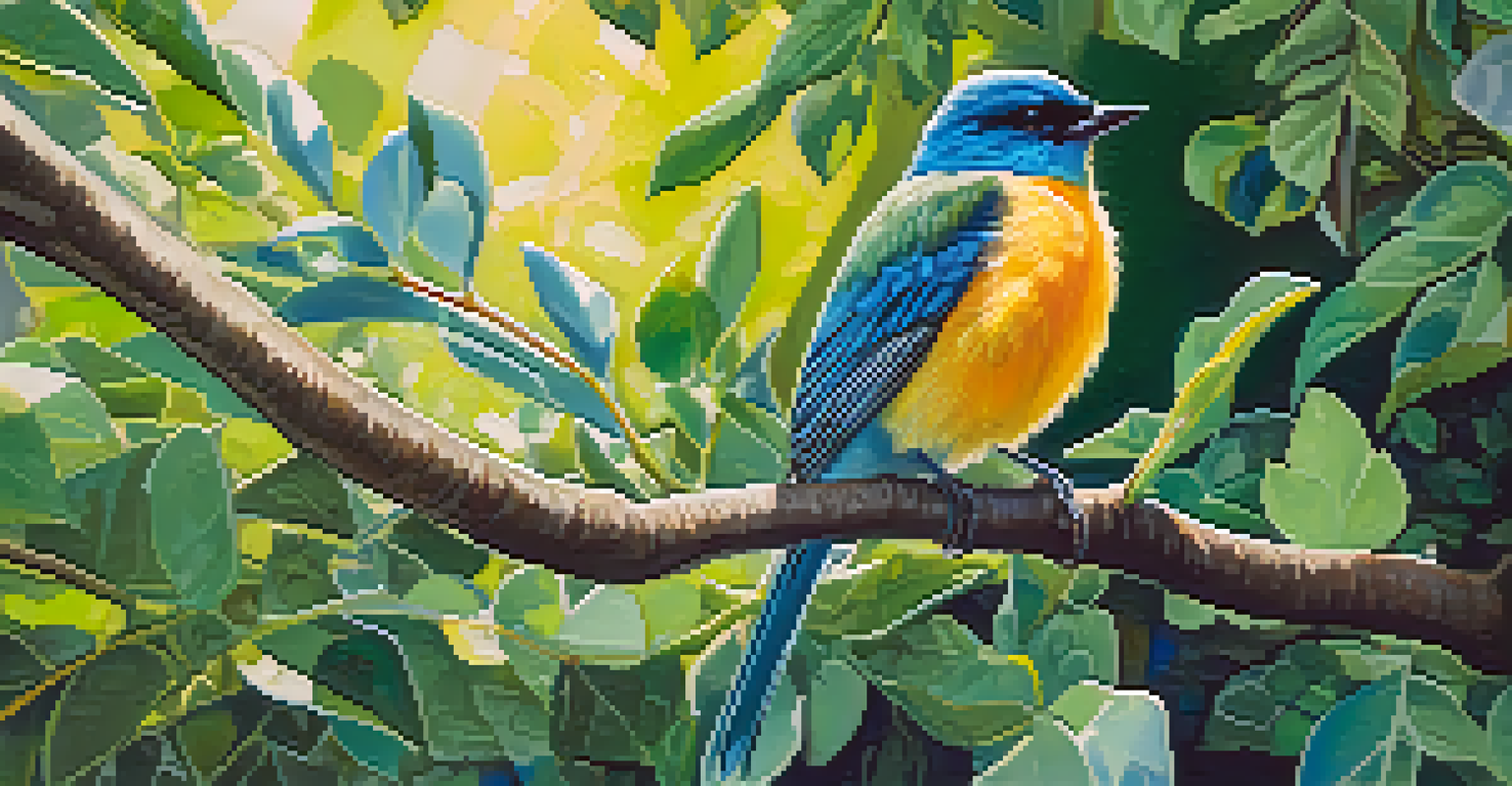Guidelines for Ethical Wildlife Photography While Traveling

Understand the Importance of Ethical Photography
Ethical wildlife photography is all about respecting animals and their habitats. It’s not just about getting the perfect shot; it’s about ensuring that your actions don’t disturb wildlife. Think of yourself as a guest in their home—your presence should not disrupt their natural behaviors or environment.
Photography is a way of feeling, of touching, of loving. What you have caught on film is captured forever... It remembers little things, long after you have forgotten everything.
By prioritizing ethical practices, you contribute to wildlife conservation efforts and inspire others to do the same. Imagine sharing a stunning photo that also tells a story of respect and care for the creatures involved. This way, your work can foster appreciation and awareness about wildlife, encouraging responsible tourism.
Ultimately, ethical photography nurtures a bond between humans and wildlife, promoting coexistence. When you understand this importance, your approach to capturing wildlife transforms from a mere hobby into a meaningful contribution to nature.
Research Your Destination and Wildlife
Before embarking on your adventure, take time to research the specific wildlife in the area you’ll be visiting. Understanding their behavior, habitat, and migration patterns can greatly enhance your photography experience. For example, knowing the right season to visit can increase your chances of capturing animals in their natural settings.

Additionally, learn about any local regulations or guidelines related to wildlife photography in that destination. Different regions may have specific rules to protect their wildlife, so being informed helps you stay compliant. Imagine planning your trip around the migration of a rare bird; the thrill of seeing it in its natural habitat becomes even more rewarding when you know you’re doing it ethically.
Embrace Ethical Wildlife Practices
Prioritizing ethical photography fosters respect for animals and contributes to wildlife conservation.
This research not only prepares you for what to expect but also fosters a deeper connection to the environment. When you understand the animals and their needs, you’re more likely to take photos that reflect their true essence without causing harm.
Use the Right Equipment Responsibly
Having the right camera gear can enhance your wildlife photography, but it's essential to use it responsibly. Telephoto lenses allow you to capture stunning close-ups without getting too close to the animals. This distance helps minimize stress on wildlife, as they often perceive humans as threats.
In every walk with nature one receives far more than he seeks.
Moreover, consider using equipment that reduces your environmental footprint. For instance, lightweight tripods and noise-reducing gear can help you blend into the surroundings without disturbing the wildlife. Picture yourself quietly observing a herd of elephants; the last thing you want is to startle them with loud noises or sudden movements.
Remember, the goal is to document wildlife without intruding. Each click of your camera should tell a story of respect and admiration for the creatures you encounter, rather than a tale of disruption.
Maintain a Safe Distance from Wildlife
One of the core principles of ethical wildlife photography is maintaining a safe distance. Getting too close can stress animals and even lead to dangerous situations for both you and the wildlife. Remember that wild animals are unpredictable, and respecting their space is crucial for your safety and theirs.
A good rule of thumb is to observe from a distance that allows you to take quality photos without intruding on their natural behavior. Consider using a zoom lens to capture details without needing to approach. This way, you can document their behaviors while allowing them to thrive in their environment.
Research Before You Shoot
Understanding wildlife behavior and local regulations enhances your photography experience and ensures ethical practices.
Think of it this way: you wouldn’t want someone invading your personal space while you go about your daily life, right? The same goes for wildlife; give them the room they need to feel secure.
Avoid Feeding or Disturbing Wildlife
Feeding wildlife may seem harmless, but it can lead to significant issues. Providing food can alter their natural foraging behavior, making them dependent on humans rather than learning to hunt or forage for themselves. Imagine a bear coming to rely on human food; this can lead to dangerous encounters and disrupt local ecosystems.
Additionally, approaching or disturbing wildlife can lead to stress, which can impact their health and breeding behaviors. Every time you step into the wild, think about how your actions could impact the animals you’re photographing. It’s about finding that balance between capturing stunning images and ensuring the well-being of the wildlife.
This principle of non-disturbance also extends to nesting sites and dens—always maintain a respectful distance to avoid causing unnecessary stress. By refraining from feeding and disturbing wildlife, you contribute to their survival and maintain the integrity of their natural behaviors.
Respect Local Cultures and Guidelines
When traveling to photograph wildlife, it’s essential to respect the local cultures and guidelines. Different communities have unique relationships with their surrounding wildlife, often stemming from deep-rooted traditions and beliefs. Engaging with locals and learning about their perspectives can enrich your experience and photography.
Many areas have specific guidelines aimed at protecting both wildlife and the environment. These rules may include designated viewing areas or restrictions on certain activities during breeding seasons. By adhering to these guidelines, you not only protect the wildlife but also show respect for the local community’s efforts to preserve their natural heritage.
Share Responsibly
Sharing your wildlife images with context promotes ethical practices and raises awareness about conservation.
Think of it as a collaborative effort—by respecting local cultures, you foster a more harmonious relationship between tourists and residents. This understanding can lead to a richer photography experience and a deeper appreciation of the wildlife you encounter.
Share Your Images Responsibly
Once you’ve captured those breathtaking wildlife images, consider how you share them. Posting responsibly means providing context about your experience and the ethical practices you followed during your shoot. This not only educates your audience but also encourages them to respect wildlife and practice ethical photography themselves.
Moreover, avoid sharing specific locations of vulnerable species, as this could lead to increased human traffic and potential harm to those animals. Instead, focus on the broader experience of connecting with nature and the stories behind your photos. Think of your images as a way to advocate for wildlife conservation, sparking interest without putting the animals at risk.

By being mindful of how you share your work, you play a part in promoting ethical wildlife photography and conservation efforts. Your platform can inspire others to appreciate and protect wildlife, creating a ripple effect of responsible behavior.